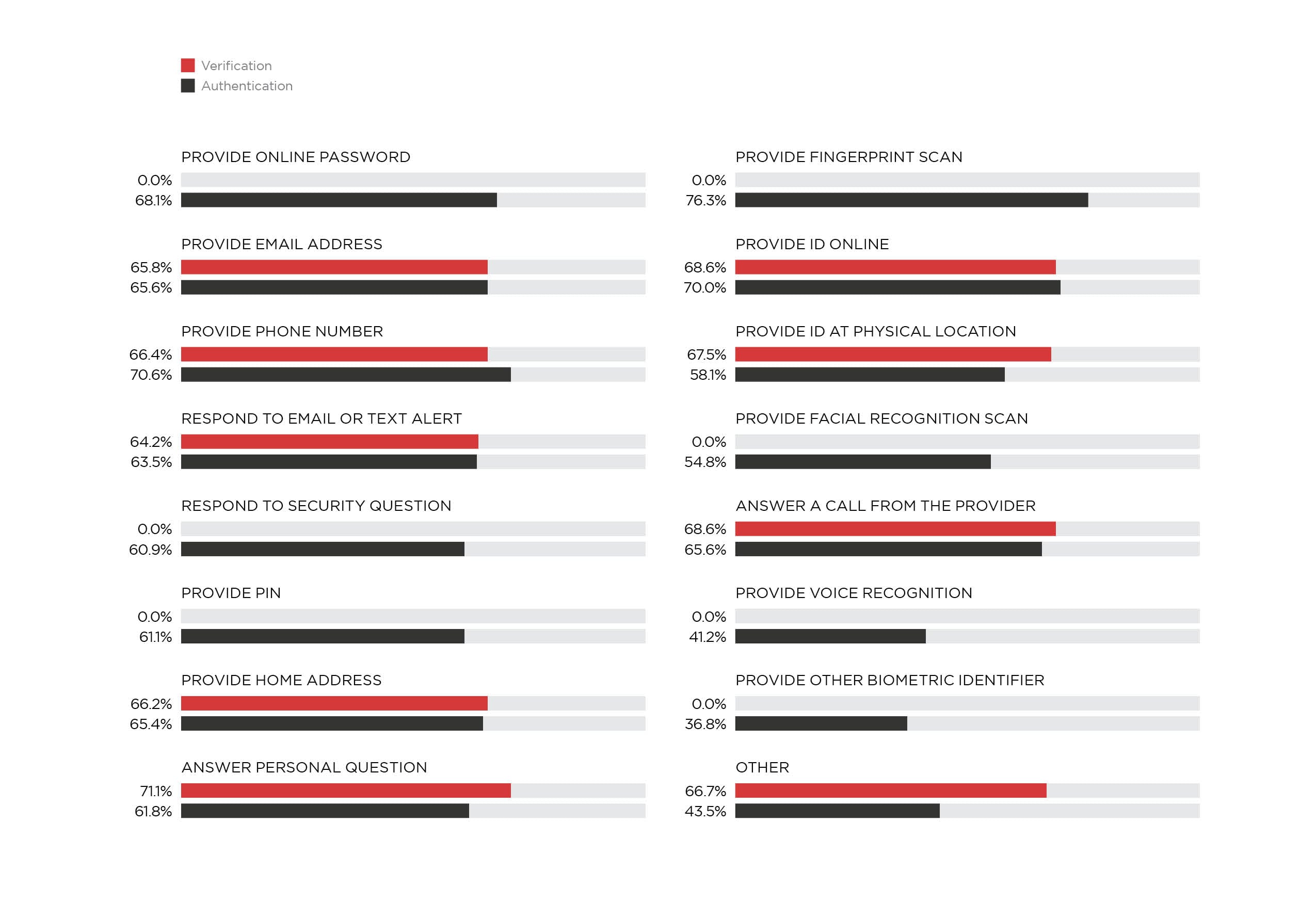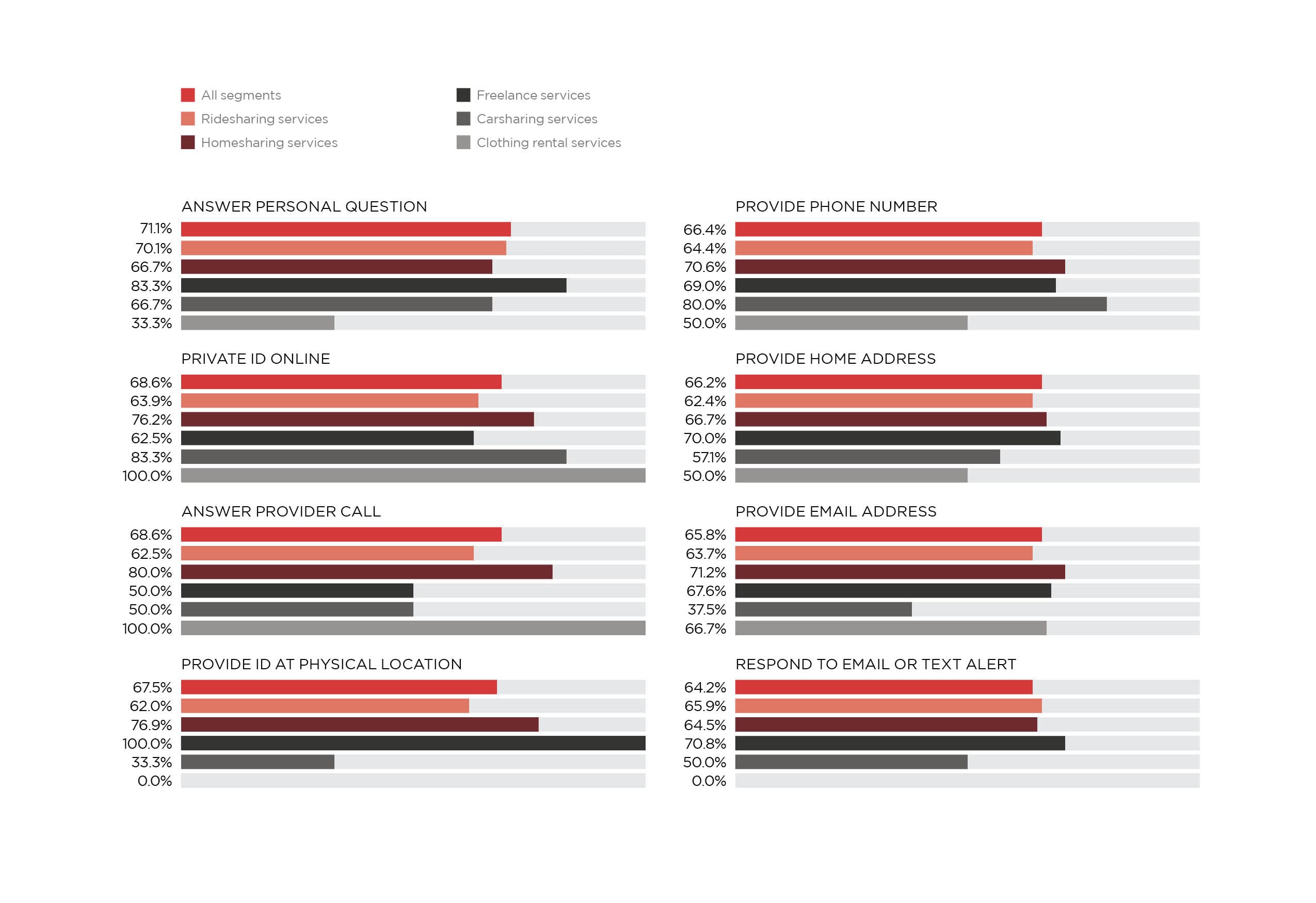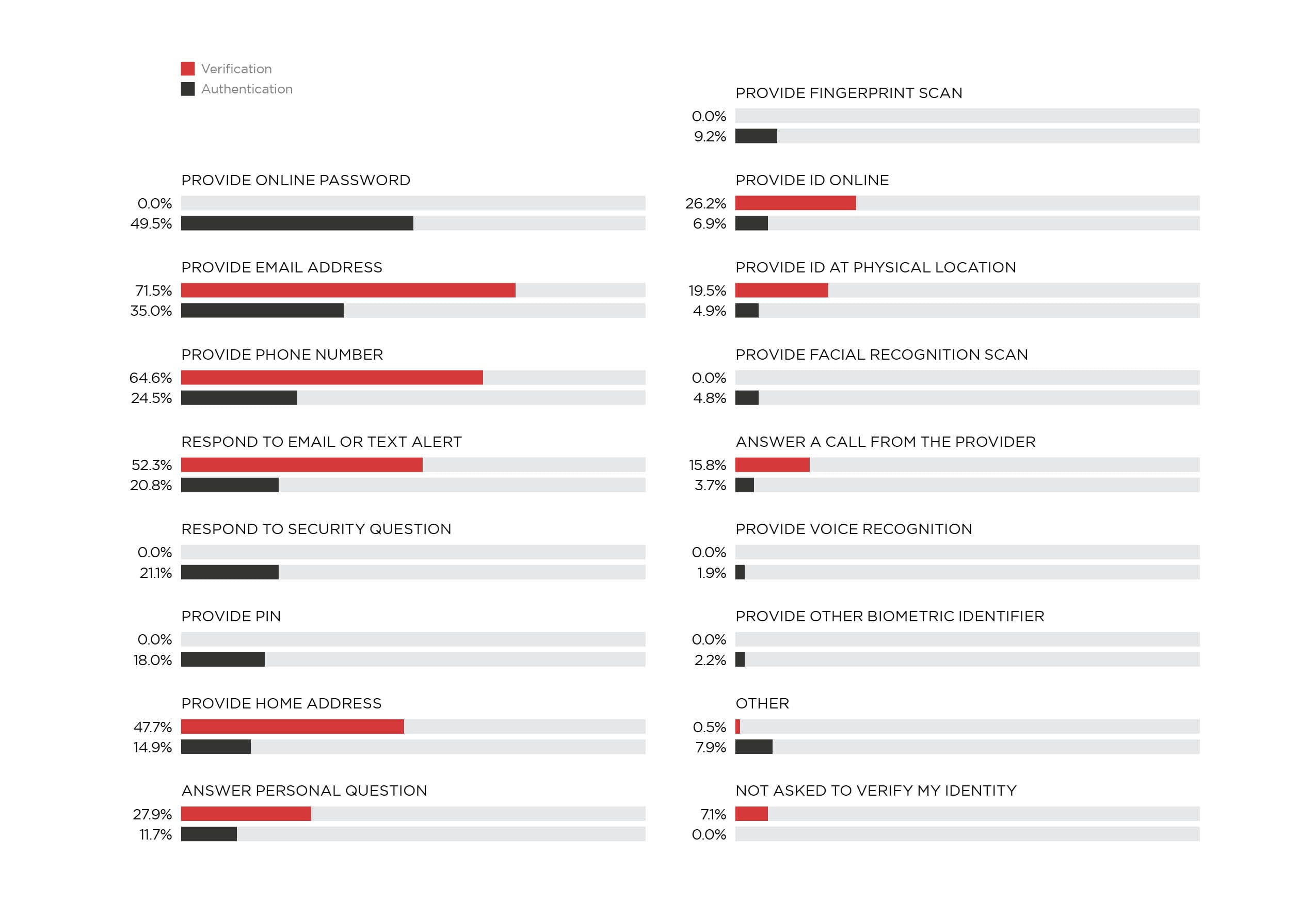NEW DATA: Consumers Want Sharing Economy Platforms To Verify Their Identity

Whether they are finding employment opportunities using platforms such as Freelancer.com, finding affordable lodging for their next vacation or merely hitching a ride across town using Uber or Lyft, some 111 million consumers daily use services offered by sharing economy platforms.
Despite their popularity, platforms use weak identity verification and authentication techniques to sign on new users and login returning ones, which puts consumers data and digital identity at risk.
The crux of the issue is that many platforms are seemingly sacrificing transaction security and integrity for smoother user experience when they onboard new users, and do so again when those users return to access said marketplace accounts.
Luckily, recent PYMNTS research suggests that this dichotomy between platform security and ease of use may be more myth than reality. In early 2019, PYMNTS conducted a survey of 3,585 consumers to learn about how they used sharing economy platforms in their everyday lives and how those platforms were taking measures to defend against digital fraud and identity theft.
While consumers looking to use sharing economy platforms must only create one account, they must access that account time and time again — each time they to gain access to the services those platforms provide.
It follows that consumers would feel satisfied signing into existing accounts using methods that require a minimal amount of time and effort. Our survey showed that sharing economy users were most satisfied with authenticating their identities using fingerprint scans. In fact, 76.4 percent of consumers who are asked to verify their identities by scanning their fingerprints when signing onto existing sharing economy accounts report being “very” or “extremely” satisfied with their login process.
Figure 1: Consumers’ satisfaction with select verification or authentication methods*
Share of consumers who are “very” or “extremely” satisfied with methods used to create or access accounts
 This is a considerably higher satisfaction rate than for other forms of biometric identification. Just 54.8 percent of users who authenticate their identities using facial recognition scans report feeling “very” or “extremely” satisfied, as do just 41.2 percent of those who use voice recognition technology. All other authentication methods using biometric identifiers, including methods such as iris scans earned an overall user satisfaction score of just 36.8 percent.
This is a considerably higher satisfaction rate than for other forms of biometric identification. Just 54.8 percent of users who authenticate their identities using facial recognition scans report feeling “very” or “extremely” satisfied, as do just 41.2 percent of those who use voice recognition technology. All other authentication methods using biometric identifiers, including methods such as iris scans earned an overall user satisfaction score of just 36.8 percent.
This makes sense. While consumers are familiar with authenticating themselves with their fingerprints on their smartphones, laptops and other devices, they aren’t as familiar with other forms of biometric authentication. It will likely take some time before voice recognition and facial recognition techniques are advanced enough to function with the same ease and accuracy as fingerprint scans.
Signing up for new accounts is an entirely different matter.
While sharing economy users must authenticate their identities each time they log into their accounts, they must only create accounts once. More specifically, they are likely to tolerate a longer sign-up process than a login process.
When it comes to signing up for new services, sharing economy users report the highest satisfaction with answering personal questions. In our survey, 71.1 percent of consumers who were asked personal questions when opening new sharing economy accounts saying they were “very” or “extremely” satisfied with the method.
On the other end of the spectrum, sharing economy users were least satisfied with being asked to respond to a one-time email or text alert. Even so, as much 64.2 percent of sharing economy users who were asked to verify their identities by responding to such a message reported feeling “very” or “extremely” satisfied with it. This seems to indicate that consumers may not have particularly strong preferences with one verification method over another when it comes to creating new accounts on sharing economy platforms.
As consistent as user satisfaction was with verification methods, on the whole, there was a considerable amount of variability when measured across different market segments.
While 71.1 percent of all sharing economy users were “very” or “extremely” satisfied with verifying their identities by answering personal questions, for instance, just 33.3 percent of those who answered personal questions when signing up for clothing rental services said the same.
Figure 2: Consumers’ satisfaction with select identity verification factors*
Share of consumers who are “very” or “extremely” satisfied with methods used to create accounts, by segment
 Then, some consumers were asked to respond to one-time emails or text alerts when signing up for new sharing economy platforms. Consumers who use freelance platforms like Freelancer.com are more satisfied with this verification method than consumers who use platforms in other market segments: 70.8 percent of them report feeling “very” or “extremely” satisfied verifying their identities via email or text alert during sing up. Yet, not even a single consumer who used clothing rental platforms was asked to respond to an email or text alert when creating their account.
Then, some consumers were asked to respond to one-time emails or text alerts when signing up for new sharing economy platforms. Consumers who use freelance platforms like Freelancer.com are more satisfied with this verification method than consumers who use platforms in other market segments: 70.8 percent of them report feeling “very” or “extremely” satisfied verifying their identities via email or text alert during sing up. Yet, not even a single consumer who used clothing rental platforms was asked to respond to an email or text alert when creating their account.
So, we know consumers’ verification and authentication preferences. Are digital sharing platforms meeting their users’ expectations in this regard?
The short answer is, no. When it comes to authenticating returning users, only a tiny minority of sharing economy platforms employ the types of methods with which users are most satisfied. Just 9.2 percent of surveyed consumers say their sharing economy platforms authenticate them using fingerprint scans, for instance, and just 27.9 percent ask new users to answer personal questions when creating accounts. This is odd considering that these are the authentication and verification methods with the highest user-satisfaction rates.
Figure 3: How consumers are asked to verify or authenticate identities when opening or accessing accounts*
Share of consumers that are asked to use select verification or authentication methods when opening or accessing their accounts

Instead of employing authentication and verification methods their users would prefer, most digital sharing economy platforms use the same, tired methods that have been in circulation since the days of the dial tone.
The most common way sharing economy users say they are asked to authenticate their identities when logging into their accounts is by providing simple passwords (49.5 percent report using them) and email addresses (35 percent). This is an issue, not only because user satisfaction rates are far lower for these methods, but also because they are notoriously unsecure, especially in today’s day and age where data breaches have seemingly become an everyday occurrence.
Digital sharing platforms’ verification techniques are not much better, either. The most common pieces of personally identifiable information new users are asked to submit when creating new accounts are their email addresses (71.5 percent of respondents were asked this when creating their accounts) and phone numbers (64.6 percent), respectively. With consumers’ personally identifiable information readily available on social media and the dark web, it can be remarkably easy for bad actors to use real consumers’ information to create fraudulent accounts.
The simple truth is that the sharing economy platforms that have become so omnipresent in most consumers’ lives are far less secure than they could be. The fact that many platforms require their users to authenticate and verify their identities using antiquated methods that have lower satisfaction rates than more advanced alternatives only adds insult to injury.
Luckily, this is a course that can be easily corrected.
*Data cited in this article may be found in The Who Are You? Verifying Digital Identity In The Sharing Economy report. To learn more, download the report.
